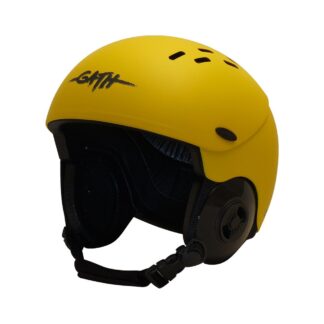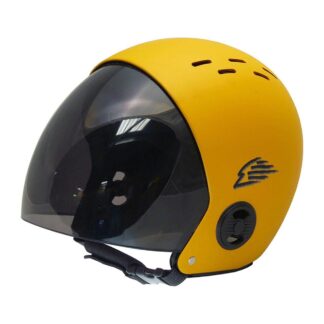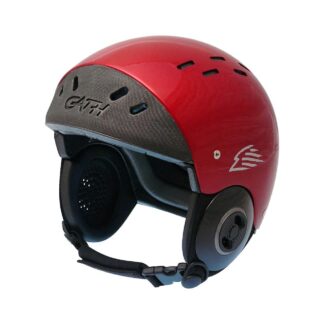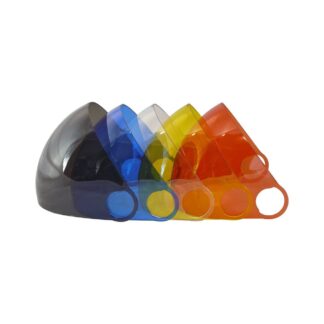Q: Which is the best Kayak helmet in your range?
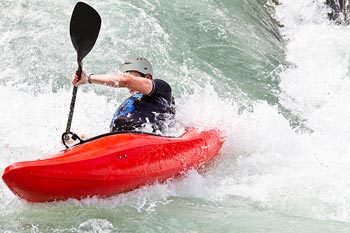 Kayakers opt for either the Gath Gedi helmet, Gath Retractable Visor (RV) helmet or Gath Surf Convertible (SFC) helmet. However:
Kayakers opt for either the Gath Gedi helmet, Gath Retractable Visor (RV) helmet or Gath Surf Convertible (SFC) helmet. However:
- Those kayaking on the river typically choose the Gedi helmet (EN 1385 Approved) or the RV helmet.
- Those kayaking in the ocean typically choose the Surf Convertible (SFC) helmet, RV helmet or Gedi helmet.
Where there is any probability of collision with rocks or similar, the Gedi is going to be the best choice. All five sizes available are accredited to EN 1385.
Q: What is CE EN 1385?
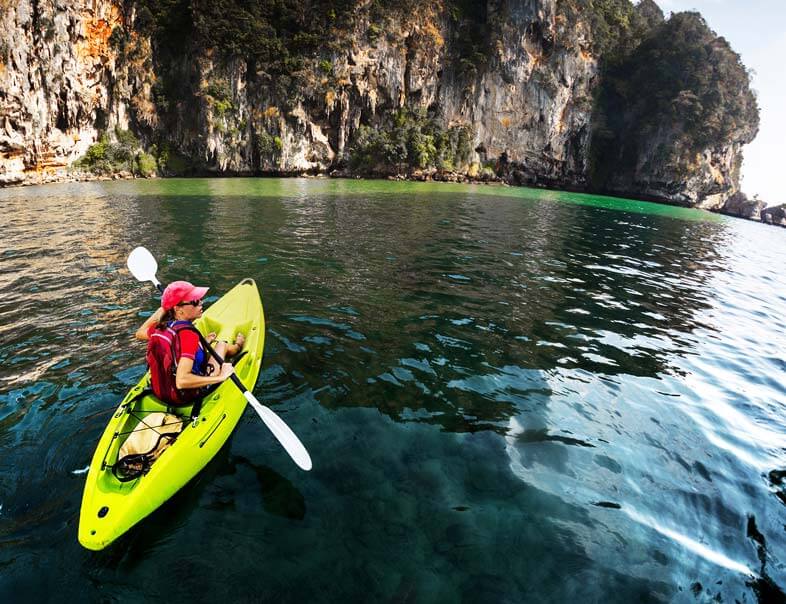
CE is short for ‘Conformité Européene’ which as you might expect, means European Conformity. When a product bears this mark, it means the manufacturer is declaring that it complies with the relevant European health safety and environmental protection legislation as set out in the corresponding Product Directives. Kayaking helmets need to conform to CE EN 1385 Standard. But what exactly does this mean? There are six elements to this safety standard that give Kayakers peace of mind:
- Field of vision: The helmet design must not interfere with the user’s field of vision.
- Extent of coverage: The helmet needs to cover all necessary parts of the head.
- Shock absorbing capacity: To protect from impact, the helmet must be capable of absorbing shock. To test this, a test is performed where the helmet is dropped at a speed of 2,5m/s
onto a solid metal anvil with a 4 kilo metal “head” inside. Within the head is an accelerometer which records the forces within the impact. The helmet is tested at high temperatures (+35ºC), low temperatures (0ºC), after artificial ageing, and after the helmet has been submerged in water for 4 hours. The test is performed on multiple parts of the helmet, including the front, side, rear and crown. The peak acceleration must not exceed 250G for any impact. - Retention system performance: A kayak helmet is no good if it slips off your head when you need it most! The retention system test looks at the strength of the webbing and its effectiveness in keeping the helmet securely in position on your head.
- Buoyancy: This test checks that after the kayak helmet has been submerged for a minimum of 4 hours, it still floats to the surface.
- Durability: Once all the tests are complete, it’s important that the helmet doesn’t show any signs of damage that could cause additional damage to the wearer.
Helmets tested to CE EN 1385 are suitable for kayaking, canoeing and a range of other paddle sports. They are not suitable for whitewater class 5 and 6.
“I was amazingly happy with the fit and I was convinced that the lid wouldn’t move on my head (exposing my temples) during an impact like my previous helmet had done. The one thing that concerned me was how well it could take an impact? I didn’t know… and as I didn’t know anyone in the UK who wore one (other than Dan) there weren’t too many reviews out there to read… little did I know that the perfect test was just around the corner! One swim on the infamous Fairy Glen on the river Conway proved to me beyond a doubt that the Gedi was pukka. I rolled and before coming out of my boat I took three huge hits on my head. Not only did the helmet stay in the same place without pushing back but I came away without any feelings of concussion.”

